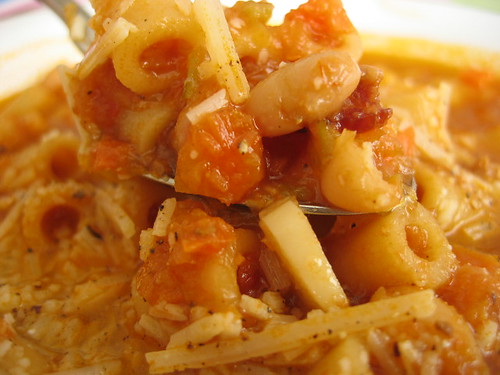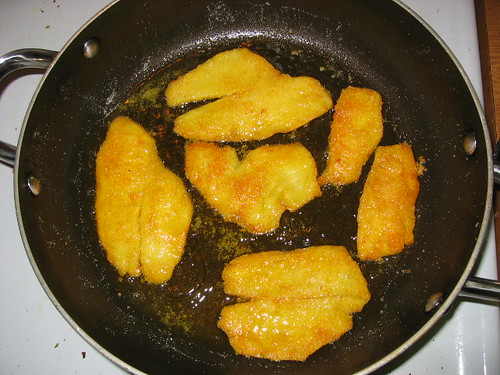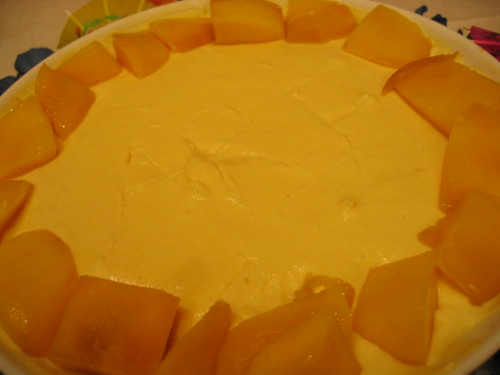
I love this soup. It's hearty and delicious. I usually make a big pot of it and then freeze it into single portions for nights when I don't have time or don't feel like cooking anything. It'd be easy to make this soup vegetarian or vegan, by substituting the bacon for an extra two tablespoons of olive oil and changing the chicken stock to vegetable stock.
Pasta Bean Soup
Makes 6-8 servings
Ingredients
2 strips of bacon, diced
2 tbsp olive oil
2 medium onions, chopped
3-4 carrots, peeled and chopped
3-4 stalks of celery, chopped
3-4 cloves of garlic, sliced thinly
1 small can of tomato paste
1 tsp dried rosemary
2 cans of navy beans, drained and rinsed
1 cup of short tubular pasta
2 32fl oz cartons of chicken stock
Salt and freshly ground pepper to taste
Parmesan or pecorino romano cheese to garnish
Brown the bacon until crispy. Then add the olive oil, carrots, onions, celery, garlic, rosemary, salt, and pepper. Sweat them until they are soft. Sweating means to cook something, often with a covered lid to create steam, until it softens and without browning it. Add the tomato paste to the pot and cook for a minute, stirring constantly so the tomato paste does not burn.
Next, add the beans and stock. Bring to a boil, then reduce to a simmer. After about ten minutes, if you like your soup thicker, mash up some of the beans. Taste for salt and pepper and adjust as necessary.
Finally, add the pasta and cook until al dente. Serve piping hot with a bit of cheese sprinkled on top.



